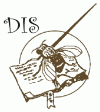



Waddle, F. 1999. A "Drosophila Kit" for the genetics teaching lab.
Dros. Inf. Serv. 82: 124. View PDF
I have developed a “Drosophila Kit” which consists of a 3 X 6 X 15 inch plastic tray containing the following items:
Each student is given a kit. Each kit is numbered. The containers and equipment within the kit are numbered the same as the kit. This discourages students from "borrowing" from one another. Ideally, the student should have a cabinet with lock in which to keep the kit and a stereomicroscope.
To go with the kit, the student has ready access (either directly or on request) to:
The 20 X 150mm test tubes require less food than bottles or vials and are excellent for single pair matings. Moreover, breakage is considerably less than for glass vials. Carolina Biological Supply Company sells an inexpensive 50 tube rack that works well. Tegosepted water is used to prepare food in the tubes and the tubes are slanted. The tegosepted cotton is for use at the bottom of the slant. Fisher's etherizer is far superior to Carolina Biological's, provided the cotton in the etherizer is replaced with a larger piece and tightly packed. To minimize the ether hazard, we use small, corked (not rubber), ether bottles and put the dropper for it in a small test tube rubber banded to the bottle.
With the student thus equipped, the faculty work load can be reduced while the student learns the basics of Drosophila research from making food, collecting virgins and making crosses to washing the glassware afterwards. Since batch matings are avoided, fewer virgins are required for equivalent result while even the unintentional use of a nonvirgin in a particular vial can provide a learning experience without disastrous result.